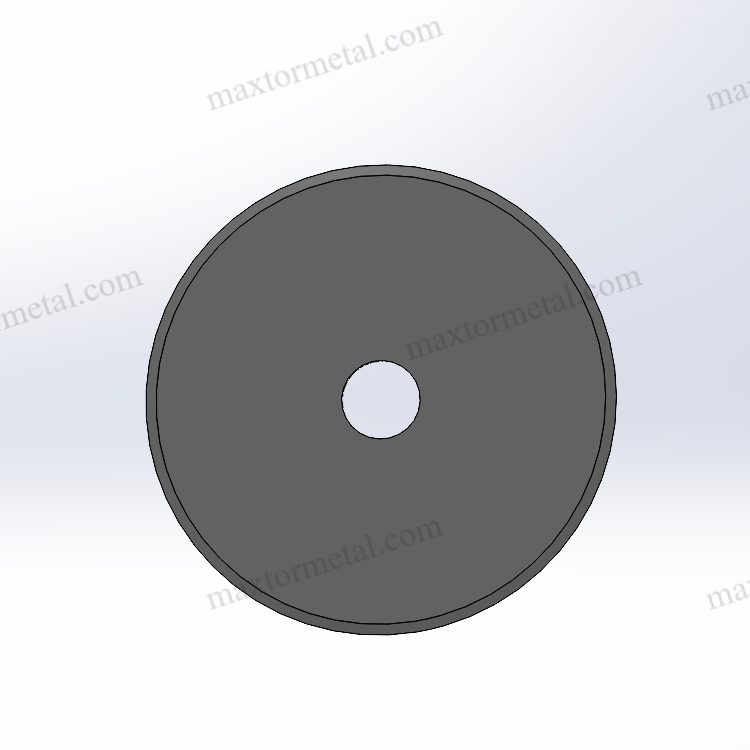
You rely on circular razor blades to keep your industrial machines running smoothly. When blades last longer, you reduce downtime, cut costs, and achieve more precise cuts every time. Proper maintenance can extend the life of blades by two to three times. Some blades feature self-sharpening technology or special coatings, and custom blades can last up to 80% longer thanks to these advancements. The table below highlights how different blade types and care methods impact their lifespan:
| Jenis Pisau | Umur Rata-rata | Key Factors Affecting Lifespan | Lifespan Extension Techniques & Impact |
|---|---|---|---|
| Pisau Pelet | 6–12 bulan | Pemotongan kecepatan tinggi, ketahanan aus | Self-sharpening blades: up to 80% longer lifespan |
| Pisau Granulator | 12–18 bulan | Contamination, abrasiveness | Tungsten carbide coatings: triple wear resistance |
| Pisau Pemotong Putar | 9–15 bulan | Cutting speed, film thickness | DLC/Teflon coatings: up to 40% longer lifespan |
| Pisau Penghancur | 12–24 bulan | Tekanan benturan, kekerasan bahan baku | AI maintenance: up to 40% longer lifespan |
For the best results, Kontak Nanjing Metal to explore their range of circular razor blades and pisau khusus solutions designed to enhance your machinery’s performance and durability.
You can also see that new blade technology helps machines work better and stop less often:
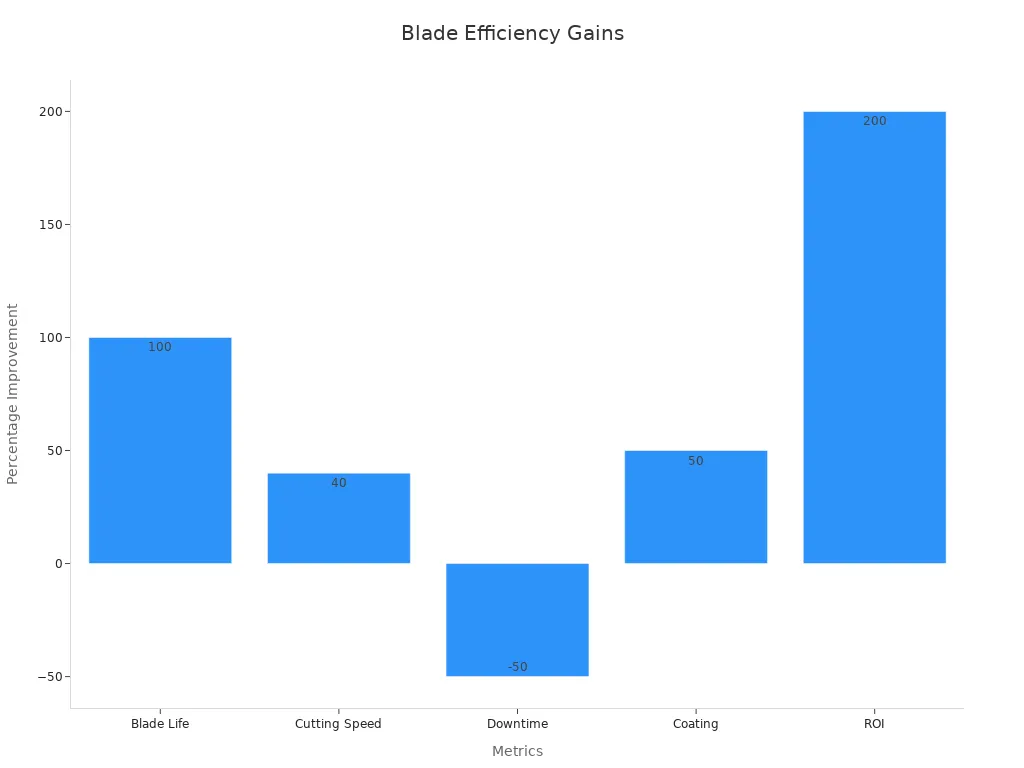
Poin-poin Utama
- Clean your circular razor blades after each use. This removes dirt and stops rust from forming.
- Keep blades in dry places with good airflow. Make sure the humidity stays under 50%. This helps stop corrosion.
- Put blade oil on before storing blades for a long time. The oil keeps moisture and rust away.
- Lubricate machine parts often. This lowers friction and helps blades and machines last longer.
- Sharpen double edge razor blades often. Use a leather strop or sharpening stone. This keeps cuts smooth and protects the machine.
- Handle blades with care. Hold the edges, wear gloves, and use proper holders. This stops damage.
- Rotate blades often. This makes sure they wear out evenly and last longer.
- Change blades right away if they get dull, chipped, rusty, or cut poorly. This keeps machines safe and working well.
Longevity of Circular Razor Blades
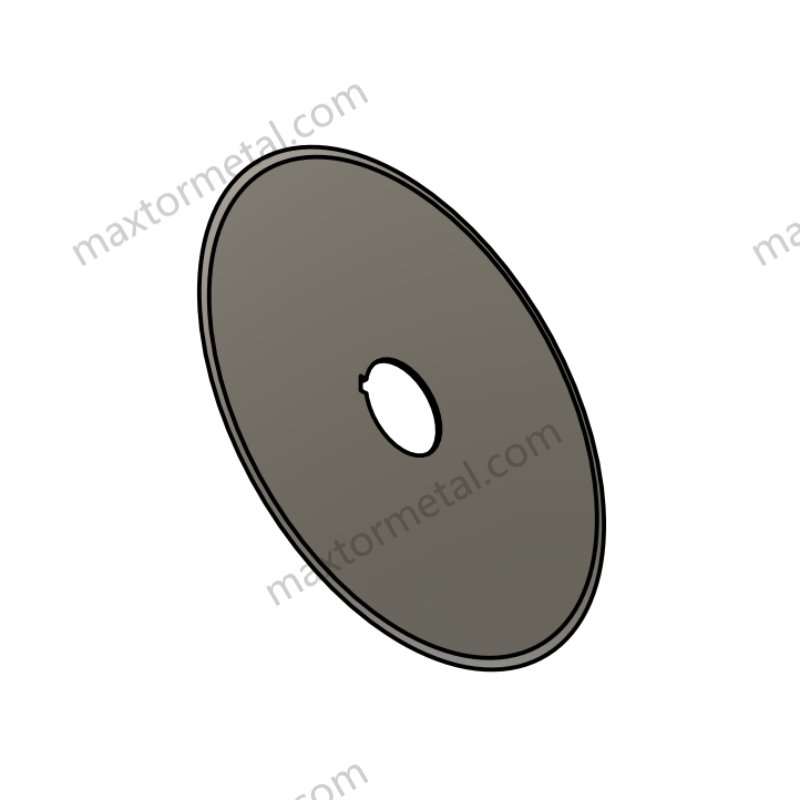
Why Longevity Matters
You need your razor blades to help machines work well. If blades last longer, you get more use from each one. This means you do not have to buy new blades as often. You save money and your machines keep working without stopping. Taking care of your circular razor blades helps them last much longer. You will spend less time changing blades and more time cutting.
How you care for your blades matters a lot. If you clean blades often and look for damage early, you stop problems before they get worse. In the Milwaukee Broach case study, workers used good blades and grinding machines. They could cut materials fast and with care. This helped them make more products and trust their machines. They did not lose time or money fixing broken blades.
The Saint Gobain case study showed the same thing. Their grinding machines worked on hard materials and finished jobs faster. This shows that caring for your blades and machines gives better results and saves time.
Tip: Clean your blades, check if they are sharp, and make sure they line up right. Doing this can help your blades last longer and stop surprise problems.
Cost and Efficiency
When you take care of your blades, you save money. Places that do regular maintenance spend up to 30% less on new blades each year. They also have about 25% less downtime than places that skip care. Good blades can cut up to 20% more material before you need to change them.
Here are some easy ways to save money and work better:
- Clean blades often to stop dirt and rust.
- Look for scratches, chips, or color changes.
- Make sure blades fit tight so they wear evenly.
- Test if blades are sharp and lined up every week.
- Check blade thickness and balance once a month.
These steps help you use your blades for a longer time. Your machines keep working well and you do not waste money on new blades too soon. When you make blades last longer, you help your team, save money, and reach your goals.
Cleaning Circular Razor Blades
Keeping your circular razor blades clean helps them last longer and work better. Dirt, dust, and leftover material can build up on the blades. If you do not clean them, the blades can get dull or rusty. You can follow these steps to make sure your blades stay in top shape.
Proper Cleaning Steps
Persiapan
Start by turning off your machine and making sure the blade is cool. Wear safety gloves to protect your hands. Gather your cleaning tools, such as a soft brush, lint-free cloth, and a mild cleaning solution. Place the blade on a stable surface.
Rinsing from Back to Front
Hold the blade so the back faces the water source. Rinse the blade from the back to the front. This method pushes debris away from the cutting edge. You avoid pushing dirt deeper into the blade gaps. Use a gentle stream of water to prevent damage.
Removing Debris and Contaminants
Use a soft brush to remove any stuck material. Pay close attention to the spaces between the blade edges. If you see stubborn residue, soak the blade in a mild alkali cleaner for a few hours. This step helps loosen tough grime. After soaking, brush again to clear away all debris. A user who cleaned a multi-blade electric razor found that soaking and brushing removed all residue, restored performance, and made the blade feel like new. This shows that careful cleaning can make your blades last longer and work better.
Drying the Blades Thoroughly
Dry the blade right after cleaning. Use a lint-free cloth to wipe off water. You can also use compressed air to blow out moisture from hard-to-reach spots. Make sure the blade is completely dry before you put it back in the machine. Water left on the blade can cause rust and shorten its life.
Tip: Always dry your blades fully. Even a small amount of water can lead to rust or corrosion.
Avoiding Residue Build-Up
Regular Cleaning Schedule
Set a regular cleaning schedule for your blades. Clean them after each use or at the end of every shift. This habit keeps dirt and residue from building up. Your blades will stay sharp and ready for the next job.
Choosing the Right Cleaning Agents
Pick a cleaning solution that matches your blade material. Use mild alkali cleaners for most industrial blades. Avoid harsh chemicals that can damage the blade surface. Test new cleaners on a small area first.
Inspecting for Residue After Cleaning
After cleaning, check the blade for leftover dirt or stains. Look closely at the blade gaps and edges. If you see any residue, repeat the cleaning steps. Clean blades cut better and last longer.
Catatan: Clean blades help your machines run smoothly and reduce the need for early replacement.
Storage for Longevity
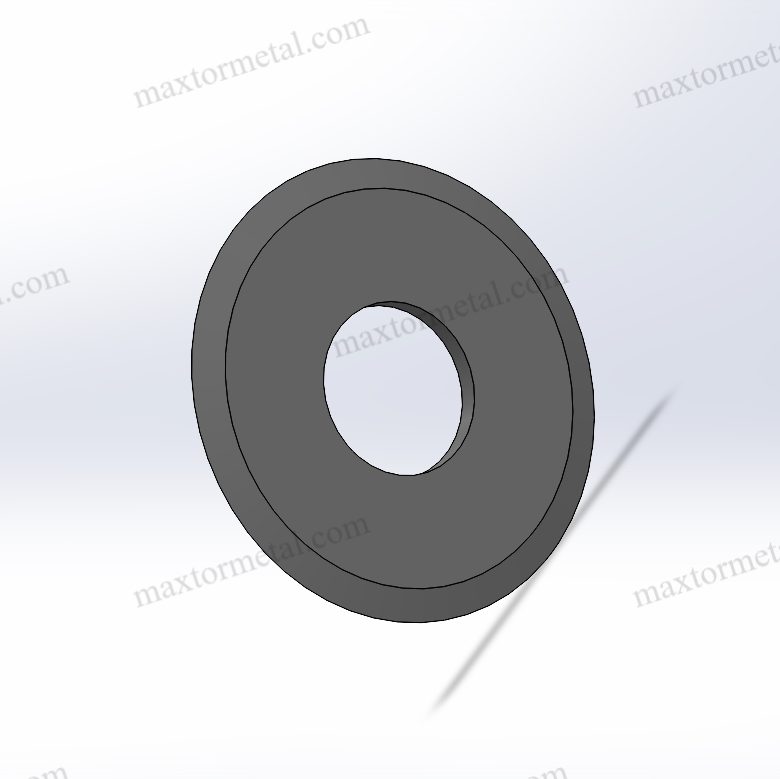
Proper storage helps your razor blades last longer and work better. If you store blades the right way, you protect them from rust, damage, and wear. You also keep your machines running smoothly. Follow these best practices to get the most out of your circular razor blades.
Dry Environments
Importance of Humidity Control
Humidity can cause rust on your razor blades. Even a small amount of moisture in the air can lead to corrosion. You need to keep your storage area dry. Use dehumidifiers or silica gel packs to lower the moisture in the room. This step helps you avoid rust and keeps your blades sharp.
Recommended Storage Room Conditions
Store your blades in a room with low humidity. The best humidity level is below 50%. Keep the temperature steady, between 60°F and 75°F. Avoid storing blades near water sources or in damp basements. Good airflow also helps keep the area dry.
| Storage Factor | Nilai yang Direkomendasikan |
|---|---|
| Kelembaban | Below 50% |
| Suhu | 60°F – 75°F |
| Airflow | Good ventilation |
| Water Sources | None nearby |
Monitoring and Maintaining Dryness
Check the humidity in your storage room often. Use a hygrometer to measure moisture levels. If you see the humidity rise, turn on a dehumidifier right away. Replace silica gel packs when they change color. Write down the humidity readings in a logbook. This habit helps you spot problems early.
Tip: Keep a simple chart on the wall to track humidity and temperature. This makes it easy for everyone to check the storage conditions.
Blade Holders
Types of Blade Holders
Blade holders come in many shapes and sizes. Some holders are made of plastic, while others use metal or wood. Choose a holder that fits your blade size and shape. Some holders have slots for each blade. Others use foam padding to keep blades from moving.
Proper Placement and Organization
Place each blade in its own slot or section. Do not stack blades on top of each other. This prevents scratches and chips. Label each holder with the blade type and date of storage. Organized storage helps you find the right blade quickly.
Preventing Physical Damage During Storage
Always handle blades with care. Wear gloves to avoid dropping or bending them. Store holders on shelves, not on the floor. Keep heavy items away from your blades. If you move holders, carry them with both hands. These steps help you avoid nicks, chips, and other damage.
Catatan: Never store blades loose in a drawer. Use a proper holder every time.
Use of Blade Oil for Long-Term Storage
When to Apply Blade Oil
If you plan to store blades for more than a few weeks, apply blade oil. Oil forms a barrier that keeps out moisture and air. This step is important if your storage area has changing humidity or if you live in a wet climate.
Teknik Aplikasi
First, clean and dry the blade. Put a small amount of oil on a lint-free cloth. Wipe the oil over the entire blade surface, including the edges. Do not use too much oil. A thin, even layer works best. Let the blade sit for a few minutes, then wipe off any extra oil.
Benefits of Blade Oil in Preventing Corrosion
Blade oil protects your razor blades from rust and corrosion. The oil blocks water and air from reaching the metal. This keeps your blades sharp and ready for use. Oiled blades last longer, so you save money and reduce downtime.
Panggilan: If you store blades for long periods, always use blade oil. This simple step can double the life of your blades.
Lubrication and Maintenance
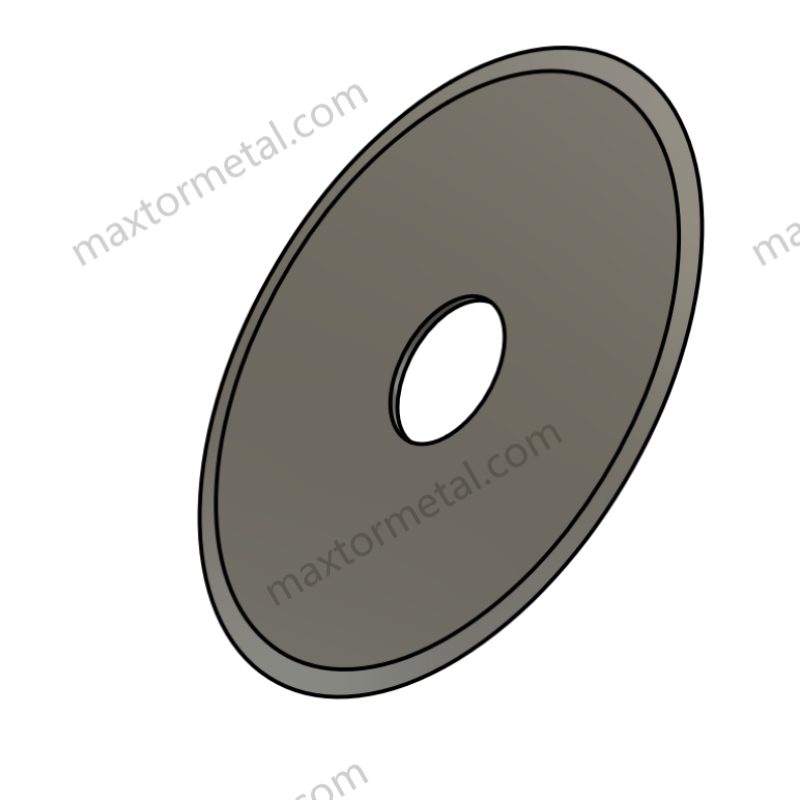
If you keep your circular razor blades and machine parts oiled, they last longer. Lubrication helps parts move easily and stops rust. It also keeps your machines working well. You can avoid many problems by doing regular maintenance.
Lubricating Moving Parts
Identifying Parts That Require Lubrication
You should know which machine parts need oil. Look for moving joints and blade mounts. Check where metal touches metal. These places can get dry or worn out. If you hear squeaks or see shiny spots, those parts need oil.
Tip: Use your machine’s manual to find oil spots. Mark these places so you remember them during maintenance.
Recommended Types of Machine Oil
Pick a good machine oil made for your equipment. Some oils have things in them that stop rust and water. Certain oils work better if your machine gets hot or works hard. Always use the oil that matches your machine’s needs.
| Oil Type | Terbaik Untuk | Fitur Utama |
|---|---|---|
| Minyak Mineral | General industrial use | Good lubrication, affordable |
| Oli Sintetis | High-speed or high-temp machines | Stable, resists breakdown |
| Specialty Oils | Wet or corrosive environments | Extra rust and water protection |
Frequency of Lubrication
Make a schedule for oiling your blades and moving parts. Most machines need oil every 100 hours of use. Some machines need oil more often if they work in tough places. Always check your machine’s guide for the right timing.
- Oil every 100 hours for most machines.
- Check oil levels once a week.
- Add oil after cleaning or if parts look dry.
Oiling often keeps out water, lowers friction, and helps machines last. Companies that oil on time have fewer problems and less downtime.
Proses Pelumasan Langkah demi Langkah
- Turn off and unplug your machine first.
- Clean around each spot that needs oil.
- Put a little oil on each spot. Do not use too much.
- Move the parts by hand to spread the oil.
- Wipe off extra oil with a clean cloth.
- Check for leaks before you turn the machine back on.
Note: Too much oil can bring dust and cause trouble. Only use what you need.
Tindakan Pencegahan Keselamatan Selama Pelumasan
Be safe when you use oil and work with machines.
- Wear gloves to keep oil off your skin.
- Use eye protection if oil might splash.
- Make sure the machine is off and cool before you start.
- Clean up any spills right away so no one slips.
- Keep oils in closed, labeled containers away from heat.
Mencegah Korosi
Avoiding Prolonged Exposure to Alcohol or Harsh Chemicals
Do not leave your blades in alcohol or strong cleaners for a long time. These can take off the blade’s protective layer and cause rust. Use gentle cleaners and rinse blades well after washing.
Proper Drying Techniques After Cleaning
Dry your blades right after you clean them. Use a lint-free cloth to wipe off water. Compressed air can help dry hard-to-reach places. Never leave blades wet because even a little water can cause rust.
Applying Protective Coatings or Oils
After drying, put a thin layer of oil or coating on the blade. This keeps out air and water and stops rust. Special oils with anti-rust help protect blades for a long time.
Callout: Oiling your blades after cleaning can make them last twice as long and stay sharp.
Monitoring for Early Signs of Corrosion
Check your blades and machine parts often for rust or color changes. Look for orange spots, rough patches, or dull areas. If you see rust, clean and oil the part right away. Fixing it early stops it from getting worse.
- Check blades every week.
- Write down your maintenance checks.
- Replace any blade with deep rust or holes.
Oiling and taking care of your blades helps them last longer and cut better. When you do these steps, your machines work well and you save money on repairs.
Sharpening Double-Edge Razor Blades

How to Sharpen a Double Edge Razor Blade
You can make a double edge razor blade sharp again. This helps the blade cut better and last longer. Many people in factories sharpen blades to keep them working well. There are a few ways to sharpen a double edge razor blade. The most popular way is with a leather strop. Stropping keeps the blade sharp by polishing it and taking off tiny rough spots. If your blade is very dull, you can use a sharpening stone or a diamond plate.
Here is how you sharpen with a strop:
- Put the strop flat on a table.
- Hold the blade at a 20-degree angle.
- Move the blade across the strop from the back to the front.
- Turn the blade over and do the other side.
- Do this 10 to 15 times for each side.
You need the right tools to sharpen double edge razor blades. Use a good strop, a fine abrasive, and wear safety gloves. Some people use a microscope to check the blade edge or put a special paste on the strop. These steps help you get a sharp and smooth blade.
Check your blade after every big job to see if it needs sharpening. Sharpen the blade if it feels harder to cut or does not work as well.
Scientists have found that sharpening changes the blade edge in tiny ways. A sharpened blade has a thinner edge and a better angle. This makes cutting easier. The table below shows how sharpening changes the force needed to cut:
| Parameter | Sharpened Blade (Wear 0) | After Wear (e.g., Wear 12) |
|---|---|---|
| Median Cutting Force (g) | ~56.5 | ~67 |
| Mean Cutting Force Top (g) | ~54 | ~71 |
| Mean Cutting Force Bottom (g) | ~57 | ~63 |
| Adjusted Standard Deviation (g) | 5 | 8 |
| Number of Measurements | 20 | 20 |
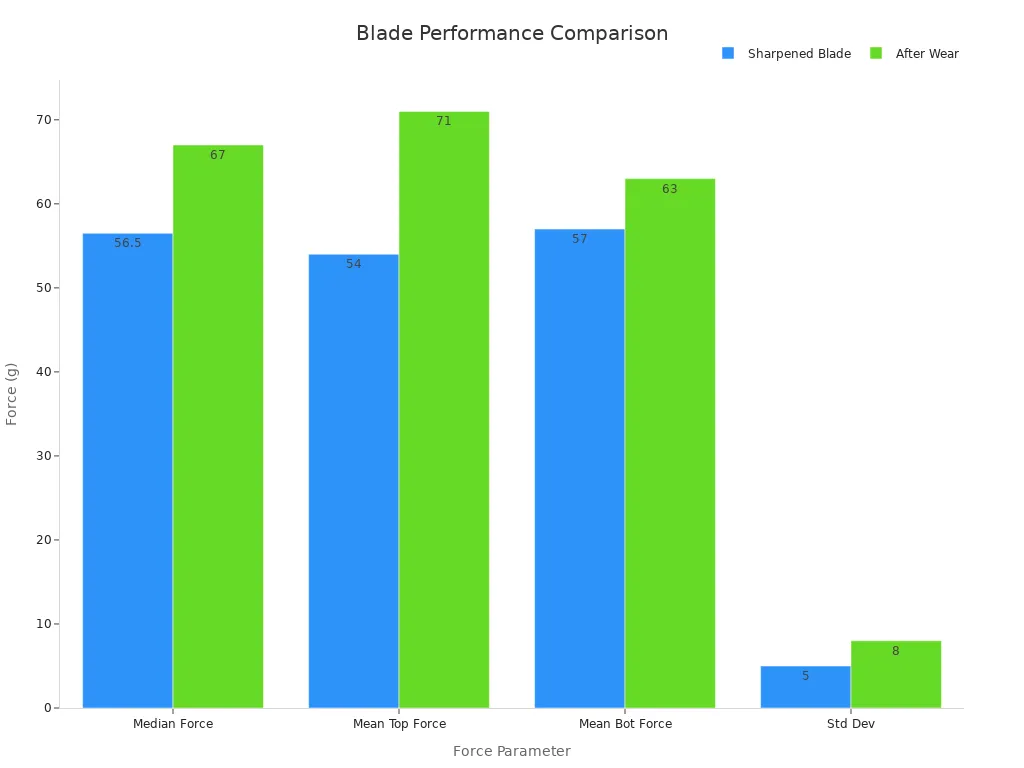
Why Sharpening a Double Edge Razor Blade Matters
It is important to know why sharpening a double edge razor blade matters. Sharpening often keeps your blades working their best. When you sharpen a double edge razor blade, you do not need as much force to cut. This means your machines do not wear out as fast. You also get smoother cuts. Sharpening helps you avoid stopping your work and saves money on new blades.
Sharp blades make a big difference in factories. They cut faster and cleaner. The data above shows that sharp blades need less force to cut. This helps them stay useful for a longer time. If you do not sharpen, blades get dull and are harder to use. This can slow down your work.
Sharpen your double edge razor blade before it gets too dull. This keeps your machines running well and your products looking good. Sharpening is an easy way to save money and use each blade longer.
If you want blades to last even more, work with a trusted double edge razor blades manufacturer. Nanjing Metal has 20 years of experience and offers custom help and sharpening support for factories. Their team knows the best ways to sharpen a double edge razor blade. They can help you pick the right tools and when to sharpen. Learn more about Nanjing Metal.
Tip: If you have questions about sharpening or want to order custom blades, talk to Nanjing Metal’s sales engineers for expert help.
Handling and Usage

Avoiding Damage
You can make your circular razor blades last much longer by handling them with care. Always pick up blades by the sides, not the sharp edge. When you move blades, use both hands and wear gloves to protect yourself and the blade. Never drop a blade or toss it onto a hard surface. Even a small fall can cause chips or cracks that ruin the blade’s edge.
Fortisblades designed their packaging with safety guards. These guards help you hold the blade the right way and keep the sharp edge safe. This kind of packaging shows that careful handling really does prevent damage. If you store blades in the wrong place or handle them roughly, you risk nicks, dings, or even breaking the blade. You should always use blade holders or cases when moving or storing blades. This keeps the edge sharp and ready for use.
When you clean blades, use soft brushes and gentle motions. Hard scrubbing or using metal tools can scratch the surface. Scratches make the blade dull faster and can lead to rust. After cleaning, dry the blade completely before putting it away. Moisture left on the blade can cause rust, which weakens the blade and makes sharpening less effective.
Tip: Handle every blade as if it is brand new. Careful handling means fewer repairs and less time spent on sharpening.
Correct Application
You should always use circular razor blades for their intended industrial purpose. Each blade is made for a specific job, such as cutting film, paper, or plastic. Using a blade on the wrong material can cause it to dull quickly or even break. If you use the right blade for the right job, you will spend less time sharpening and more time working.
Never use a circular razor blade as a tool for prying, scraping, or cutting materials it was not designed for. This can bend the blade or damage the edge. When you notice the blade is not cutting as well, check if it needs cleaning or sharpening. Do not force a dull blade through tough material. This puts extra stress on the blade and the machine.
Set up a routine to check your blades before each shift. Look for signs of wear, chips, or bending. If you see any problems, fix them right away. Regular checks help you catch issues early, so you can sharpen or replace blades before they cause bigger problems.
| Kesalahan Umum | Resulting Damage | Prevention Tip |
|---|---|---|
| Using wrong material | Fast dulling, breakage | Match blade to material |
| Dropping blades | Chips, cracks | Use blade holders |
| Forcing dull blades | Bending, machine strain | Sharpen or replace as needed |
Catatan: The right application and regular sharpening keep your blades working longer and your machines running smoothly.
Blade Rotation and Tracking

Rotating Blades
You can make your circular razor blades last longer by rotating them in your machines. When you use more than one blade at a time, each blade does not wear out at the same speed. Some blades cut more material or face more pressure. If you leave blades in the same spot, they wear unevenly. This can cause one blade to become dull or damaged before the others.
To solve this, you should rotate the blades on a regular schedule. Move each blade to a new position after a set number of hours or after each shift. This helps all blades wear at the same rate. You get more use from every blade, and you avoid sudden failures.
Tip: Set a reminder to rotate your blades every week or after a certain number of production cycles. This simple habit can help you save money and keep your machines running smoothly.
Here is a sample rotation plan for a four-blade system:
| Week | Blade 1 | Blade 2 | Blade 3 | Blade 4 |
|---|---|---|---|---|
| 1 | A | B | C | D |
| 2 | B | C | D | A |
| 3 | C | D | A | B |
| 4 | D | A | B | C |
By following a rotation plan, you make sure no single blade gets overused. This keeps your cuts even and your production steady.
Usage Logs
Keeping a usage log helps you track how long each blade has been in service. You write down the date you install each blade, the position it starts in, and when you rotate or replace it. This record helps you spot patterns. You can see which blades wear out faster and adjust your rotation schedule.
A good usage log can look like this:
| Date | Blade Position | Hours Used | Maintenance Done | Catatan |
|---|---|---|---|---|
| 2024-06-01 | 1 | 40 | Rotated | No issues |
| 2024-06-08 | 2 | 80 | Sharpened | Slight dullness |
| 2024-06-15 | 3 | 120 | Replaced | Edge chipped |
You can use a notebook, a spreadsheet, or special software. The important thing is to update your log every time you work with the blades. This habit helps you plan maintenance before problems happen. You avoid sudden breakdowns and keep your machines working longer.
Catatan: Usage logs also help you order new blades on time. You know exactly when each blade needs attention.
If you want to learn more about solusi bilah khusus or need help setting up a tracking system, you can Kontak Nanjing Metal’s sales engineers for expert advice.
Custom Circular Razor Blades
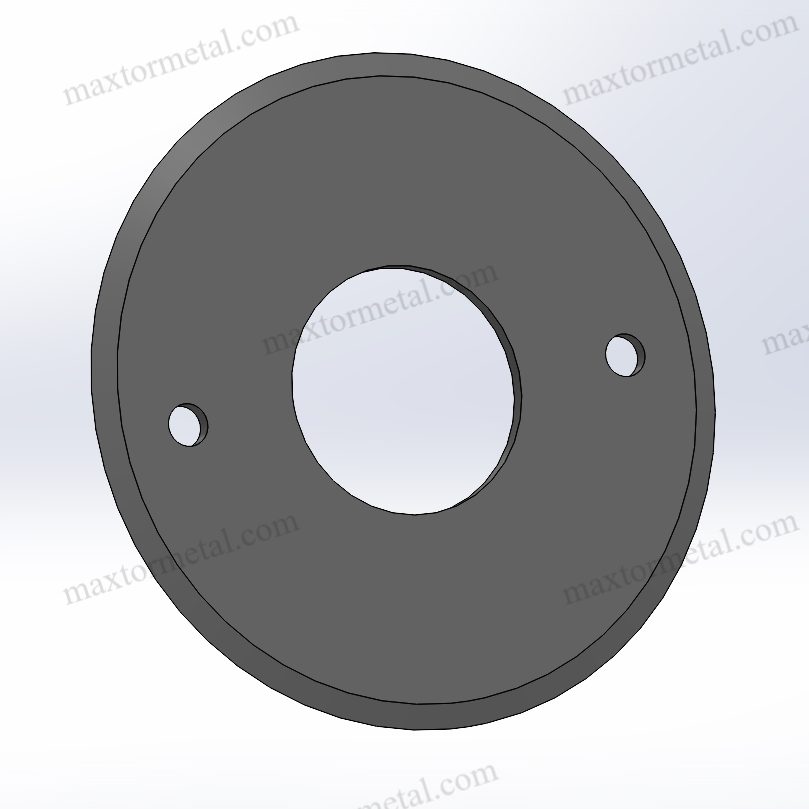
Manfaat Pisau Kustom
You can make your machines work better and save money by using custom circular razor blades. Custom blades let you pick the blade’s design, material, and coating for your needs. This helps you get better cuts and makes blades last longer.
Custom blades use special materials and coatings. You can choose from carbon steel, high-speed steel, tungsten carbide, ceramics, or stainless steel. Each material is best for certain jobs. Stainless steel does not rust, so it is good for food processing. Tungsten carbide is strong and works well with tough plastics and rubber. You can also pick the blade’s shape and edge. Some blades are solid discs, some have teeth, and others have special edges for slitting or making holes. These choices help you get fast, clean cuts every time.
Special coatings like TiN, CrN, or DLC make blades harder and smoother. These coatings lower friction and help blades last longer. Heat treating and cryogenic steps make blades even tougher. You will spend less time changing blades and more time using your machines.
Custom manufacturing lets you match the blade to your machine and product. You can ask for changes in size, thickness, or edge style. This means your blade will fit better and last longer in your setup. You also get better quality control. Each blade is tested to make sure it works for you.
Here is a table that shows how custom blades help different industries:
| Application Industry | Benefits of Custom Circular Razor Blades |
|---|---|
| Pengolahan Makanan | Precise slicing and trimming with corrosion-resistant stainless steel blades. |
| Industri Tekstil | Clean, efficient slitting with blades shaped for fabrics and nonwovens. |
| Rubber and Plastics | High wear resistance using tungsten carbide or alloy tool steel blades. |
| Metalbekerja | Durable slitting and scoring with high-speed steel or carbide blades. |
| Medical & Pharmaceutical | Hygienic, corrosion-resistant cutting with stainless steel and ceramic blades. |
| Industri Daur Ulang | Long-lasting blades with special coatings for abrasive materials. |
Tip: Custom blades help you cut faster, stop downtime, and make your products better.
Inspection and Maintenance Checks

Regular inspection and maintenance help you keep your circular razor blades in top condition. You can spot problems early and fix them before they cause bigger issues. This section shows you how to check your blades and set up a good maintenance schedule.
Inspeksi Reguler
Visual Inspection for Wear and Damage
You should look at your blades every day. Hold each blade up to the light. Check for chips, cracks, or uneven edges. If you see any damage, take the blade out of service. Damaged blades can break during use and hurt your machine or your product.
- Look for shiny spots or dark marks.
- Check both sides of the blade.
- Use a magnifying glass for a closer look.
Tip: A quick visual check can save you from costly repairs later.
Checking for Corrosion or Rust
Rust can make your blades weak. You need to check for orange or brown spots on the blade surface. If you find any, clean the blade right away. Use a soft cloth and a mild cleaner. Dry the blade completely before putting it back.
- Check the blade edge and the mounting holes.
- Look for rough patches or pitting.
- Clean and oil the blade if you see any signs of rust.
Assessing Blade Sharpness
Sharpness is key for good cutting. You should test the blade’s edge before each shift. Run a piece of test material through the machine. If the blade does not cut cleanly, it may need sharpening. You can also touch the edge gently with a wooden stick. A sharp blade will shave off a thin layer.
- Test with the same material you use in production.
- Compare the cut to a new blade’s cut.
- Record the results in your maintenance log.
Note: Keeping track of sharpness helps you plan sharpening before the blade gets too dull.
Inspecting Blade Alignment and Mounting
Blades must sit straight and tight in the machine. Check the mounting bolts and alignment marks. If the blade wobbles or sits at an angle, adjust it right away. Misaligned blades wear out faster and can damage your machine.
- Spin the blade by hand to check for wobble.
- Tighten loose bolts.
- Use alignment tools if your machine has them.
Maintenance Schedules
Establishing Inspection Intervals
You need a clear schedule for inspections. Daily checks catch small problems. Weekly and monthly checks go deeper. Write down your plan and share it with your team.
| Tugas | Interval |
|---|---|
| Inspeksi visual | Sehari-hari |
| Rust and corrosion check | Mingguan |
| Uji ketajaman | Mingguan |
| Alignment and mounting | Mingguan |
| Full cleaning and oiling | Bulanan |
Callout: A set schedule keeps everyone on track and your blades in top shape.
Daily, Weekly, and Monthly Maintenance Tasks
You should break down your maintenance into daily, weekly, and monthly tasks. This makes it easy to remember what to do and when.
- Sehari-hari:
- Wipe down blades after use.
- Check for chips or cracks.
- Remove dust and debris.
- Mingguan:
- Inspect for rust or corrosion.
- Test blade sharpness.
- Check alignment and mounting.
- Record findings in your log.
- Bulanan:
- Deep clean all blades.
- Apply protective oil.
- Perform full sharpening if needed.
- Review maintenance records.
Dokumentasi dan Pelacakan
Keeping good records helps you spot patterns. Use a logbook or a digital spreadsheet. Write down each inspection, sharpening, and replacement. This helps you know when to sharpen or replace a blade.
| Date | Blade ID | Jenis Inspeksi | Tingkat Ketajaman | Sharpening Done | Catatan |
|---|---|---|---|---|---|
| 2024-06-01 | B-101 | Mingguan | Bagus | TIDAK | No issues |
| 2024-06-08 | B-101 | Mingguan | Adil | Ya | Sharpened edge |
| 2024-06-15 | B-101 | Mingguan | Bagus | TIDAK | After sharpening |
Note: Good documentation helps you plan sharpening and replacement. You avoid surprises and keep your machines running.
When to Replace Circular Razor Blades

You need to know when to change your circular razor blades. This helps your machines stay safe and work well. If you wait too long, your equipment can get damaged. Your work may slow down, and your products might not look good. Watch for these signs that show your blade needs help.
Tanda-tanda untuk Penggantian
Dullness or Reduced Sharpness
Your blade may not cut as well as before. You might need to push harder to cut things. If you see rough edges on your materials, your blade is not sharp anymore. This means you should sharpen or replace your razor blade.
Visible Damage (Nicks, Chips, or Cracks)
Look at your blade for small nicks, chips, or cracks. Even tiny marks can make the blade weak. A weak blade can break while you use it. Broken blades can scratch or tear your materials.
Presence of Rust or Corrosion
Check for orange or brown spots on the blade. Rust and corrosion make the blade weak and unsafe. If you see rust, change the blade right away.
Poor Cutting Performance (Increased Resistance or Inconsistent Cuts)
If your blade has trouble cutting or leaves uneven edges, it may be time for a new one. Bad cuts often mean the blade is dull, broken, or not lined up right. You may also notice your machine working harder.
Suara Tidak Biasa Selama Pengoperasian
Listen for odd sounds when your machine is running. Squeaks, grinding, or rattles can mean the blade is broken or not in place. These sounds warn you before bigger problems happen.
Lengkungan atau Deformasi Bilah
If a blade looks bent or twisted, it will not cut straight. Warped blades can jam and hurt your machine. Always change any blade that does not keep its shape.
Frequent Material Jamming or Snagging
If your machine jams or snags a lot, the blade may be the reason. Dull or broken blades catch on materials and slow you down. Lots of jams mean you should check and maybe change the blade.
Tip: Check your blades often for these signs. Changing blades early stops big problems and keeps your work moving.
Risiko Penggantian yang Tertunda

Waiting too long to change your circular razor blades can cause big trouble. Here are some main risks:
Increased Risk of Machine Damage
Old blades can get very hot, sometimes up to 475 °C. This heat can hurt both the blade and your machine. Machines with dull blades break more and need more repairs.
Higher Likelihood of Product Defects
Dull or broken blades make rough, messy cuts. You may see more bad parts or wasted materials. Bad cuts can mean your products do not pass quality checks.
Reduced Production Efficiency
If blades do not work well, machines slow down. You may have to stop work to fix jams or change parts. Slow machines can make you miss deadlines and lose money.
Bahaya Keselamatan bagi Operator
Blades with chips, cracks, or rust can break while you use them. Broken blades can hurt people working with the machines. Good blades help keep everyone safe.
Escalating Maintenance Costs
If you wait too long to change blades, repairs cost more. Machines may need new parts or longer fixes. You also spend more on work and new materials.
Potential for Unplanned Downtime
Broken or hot blades can make machines stop without warning. This means lost work time and late orders. Delays can hurt your business and your good name.
- Old blades often get too hot and damage machines.
- Dull blades need more force, which can break machines and slow work.
- Broken blades cause surprise stops and higher repair bills.
- Regular care and changing blades on time keep your work going well.
Catatan: Watch your blades and change them when needed. This saves money, keeps people safe, and helps your machines work their best.
You can help your circular razor blades last longer if you do a few easy things:
- Wipe off blades every time you use them.
- Keep blades in a dry spot so they do not rust.
- Put oil on moving parts often to stop them from sticking.
- Make blades sharp again before they get too dull.
- Get a new blade if you see any chips or cracks.
Taking care of your blades helps your machines work well and saves you money.
Tanya Jawab Umum
How often should you clean industrial circular razor blades?
Clean your blades after every shift or job. This removes dirt and stops rust. Cleaning often keeps blades sharp and machines working well.
What is the best way to store circular razor blades?
Keep blades in a dry place with good airflow. Use blade holders or cases so they do not get damaged. Make sure the room stays under 50% humidity. Good storage stops rust and keeps blades ready.
Bagaimana Anda tahu kapan harus mengganti bilah pisau?
Check for dull edges, chips, rust, or bad cuts. If you see any of these, change the blade right away. Replacing blades quickly keeps machines safe and cuts clean.
Can you sharpen all types of circular razor blades?
Most industrial blades can be sharpened, especially if made from strong steel. Some blades with special coatings or materials may need a pro to sharpen or replace them. Always check what your blade needs.
What are the main causes of blade wear?
Blades wear out from cutting rough stuff, not cleaning, bad storage, or using the wrong blade. Taking care of blades and using them right helps them last longer.
Why choose a custom blade manufacturer for your needs?
A custom blade maker makes blades just for your job. You get a better fit, longer use, and better results. For expert help, you can trust Nanjing Metal, a top blade maker with 20 years of experience.
Lihat Juga
Cara Memperpanjang Umur Pisau Pemotong Bundar: Ketahanan Aus Terungkap
Production Process of Circular Blade Cutting
Best Material Choices for Circular Slitting Blades: Key to Efficiency and Durability
How to effectively extend the service life of tungsten steel circular blades?


